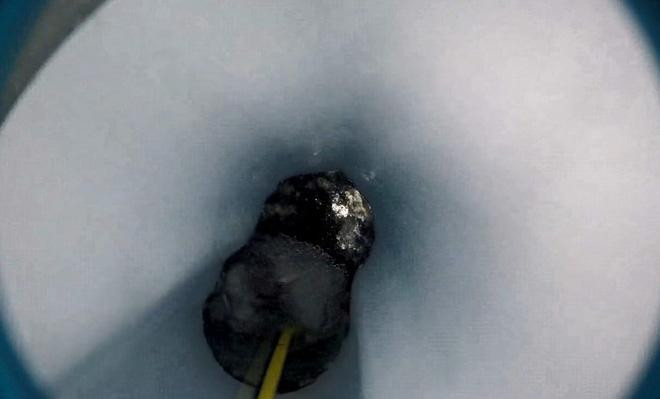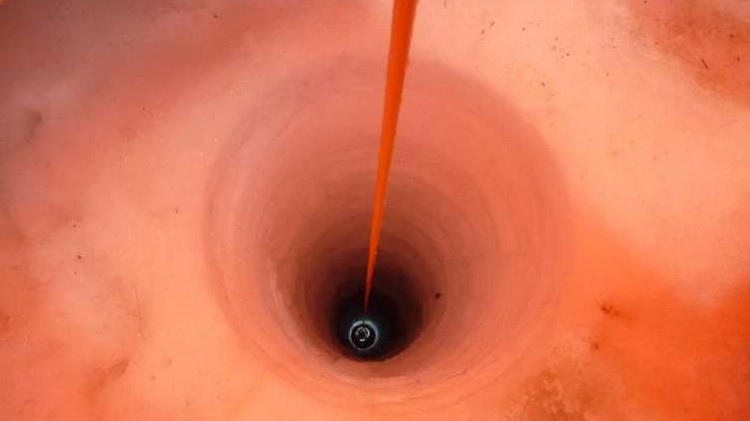Marvel at the space below the Antarctic ice shelf at a depth of 300 meters
The phenomenon is seriously threatening the existence of ice shelves in Antarctica.
During an exploration of the Ross ice shelf in Antarctica under New Zealand's Ross Ice Shelf Aotearoa program , scientists tried drilling a hole more than 300 meters deep and investigating the impact of climate change on the Antarctic ice shelf.

Beneath the Ross ice shelf.
With an area equivalent to the whole of France, Ross ice shelf of New Zealand has 90% of ice mass under the water and is one of the typical ice shelves of Antarctica.
Therefore, scientists have drilled a hole 300 meters deep under Ross ice to find clues related to the impact of climate change, including seawater warming phenomenon in Antarctica.
Scientists' predictions are completely grounded. The data show that seawater was significantly warmer than in the 1970s, so this measurement achieved a much deeper depth.

Ross ice shelf in New Zealand has up to 90% of the ice mass under the water.
It is unclear whether warm waters under the Ross ice shelf affect the stability of both Antarctica. However, this is a sign of instability and the risk of melting the entire ice in the southernmost Earth.
Melting ice not only causes sea level to rise but also indirectly causes the phenomenon of global warming more seriously, because one of the tasks of the ice is to reflect most of the sunlight on Earth.
- Two ice cracks threaten the Antarctic research station
- A mollusk discovered in the Antarctic abyss
- The 12,000-year-old ice shelf is about to disappear
- Volcanoes operate under the Antarctic ice shelf
- Discovering huge lakes in the Antarctic ice
- Finding fish and shrimp living under thick ice in Antarctica
- Giant cracks in the Antarctic ice shelf are about to
- Antarctica was once warm
- Fish at a depth of nearly 400 meters drifted to the US coast
- Super high resolution of the new map of the icy continent
- Polarstern icebreaker explores the seafloor not yet on the map
- Satellites find deep canyons beneath thick ice in Antarctica
 'Fine laughs' - Scary and painful torture in ancient times
'Fine laughs' - Scary and painful torture in ancient times The sequence of numbers 142857 of the Egyptian pyramids is known as the strangest number in the world - Why?
The sequence of numbers 142857 of the Egyptian pyramids is known as the strangest number in the world - Why? History of the iron
History of the iron What is alum?
What is alum?